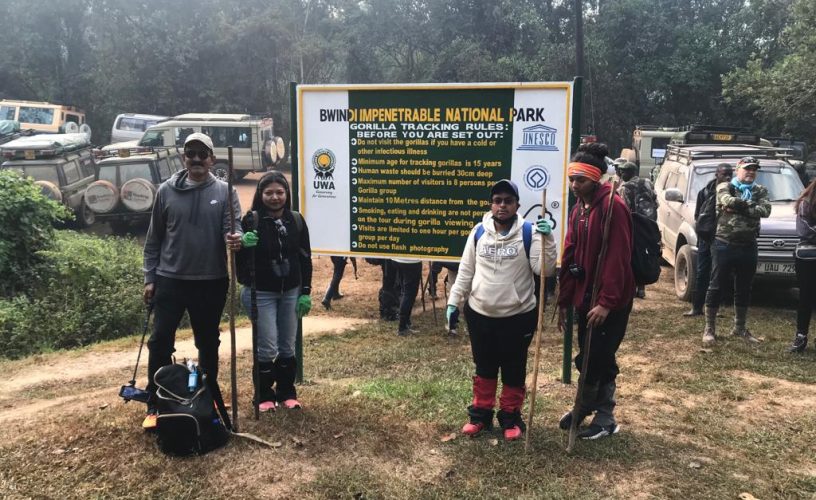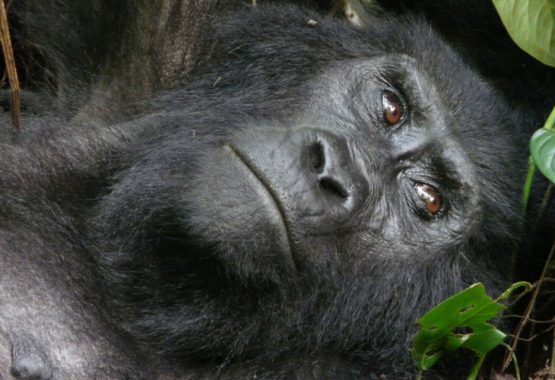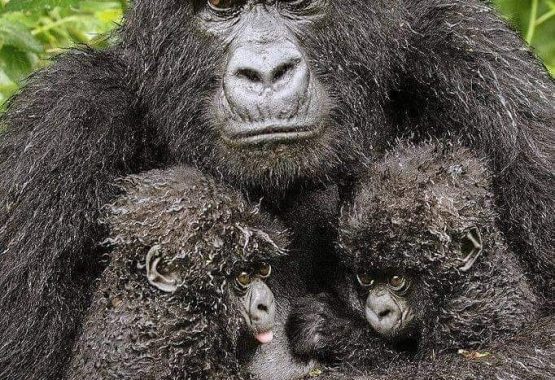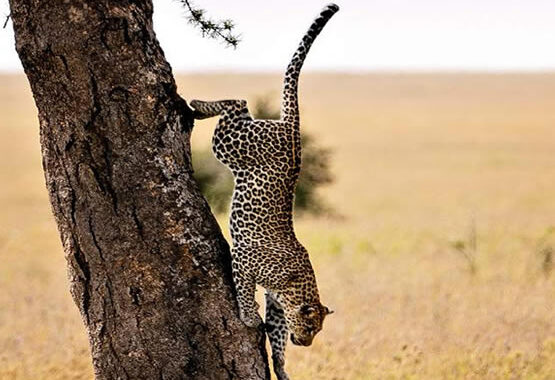Gorilla Trekking in Bwindi
With 326 Gorillas, gorilla safaris and gorilla trekking tours are the main tourist activity within Bwindi. Each day, 2 gorilla groups are normally accessible for tourists to see. The Mubare group consisting of Sixteen gorillas with One Silver back was officially opened up for tourism back in 1993. The second group is the Habinyanja group which consists of Twenty three gorillas with Two silver backs and was opened up in 1998, July. The final and 3rd gorilla group has Seventeen gorillas with two silverbacks, which are soon to be opened up for tourism.
All gorilla trekking permits are officially sold at the head offices of the Uganda Wildlife Authority in Kampala and just 8 gorilla permits each day are sold for every one of the Two Gorilla groups. Prior booking of a minimum of 3 months earlier is advised to prevent losing out.
– This Gorilla tracking activity begins at 8:30 in the morning and may last the entire day.
-you are allowed to spend only one hour with the Gorillas on meeting them.
– Gorilla Tracking in Bwindi is tiresome and as a result, tourists are advised to be in good physical shape and bring jungle boots as well as rain jackets with them since the forest is constantly wet.

Cultural Encounters – The Batwa
Bwindi is surrounded by different tribes though the commonest people are the Batwa pygmies who lived in the forest with animals thousand years ago. They were hunters and fruit gatherers but these people were pushed out of the forest by the Government of Uganda which made Bwindi a national park to promote tourism.
Visit the friendly Batwa and observe how they cook and serve meals, and enjoy the energetic cultural dance performances as well as traditional songs. You will get to meet the traditional healer who uses plants and leaves as medicine and miraculously heals his people.
The people around Bwindi involve in making beautiful African crafts for example handmade artifacts like bee-wax candles, fabrics, and wood carvings.
Get the opportunity to visit the different primary and secondary schools and teachers who can entertain you with songs and dances.
Experience the African way of making juice, beer, and gin out of bananas and taste the marvelous results.
Hiking/Nature walks in Bwindi
There are 5 main nature trails in Buhoma for those who wish to explore the “impenetrable forest”:
Muyanga Waterfall Walk departs from Buhoma along the River Ivi-Nkuringo trail and culminates in the sensational sight of the falls plummeting 33 meters.
Rushura Hill Walk passes through one forest shared by two countries. On a clear day, you can view Lakes Edward and George and the Rwenzori Mountains as well as the conical peaks of the Virunga Volcanoes.
Muzubijiro Loop is a 6km walk around a hill, where you will encounter primates and birds and enjoy a view of the Virungas.
The Ivi River Walk is 14km and takes around seven hours. The trail passes a place known as Mukempunu – meaning “a place of pigs” – where wild pigs can often be found.
The Buhoma-Nkuringo Trail takes three to four hours, and crosses right through the park, connecting the two villages and offering impressive views of the misty hillsides as you ascend the hills towards Nkuringo. You can leave our luggage with your driver, who will meet you at the other side. This trail can also be completed as part of the Ivi River Walk.
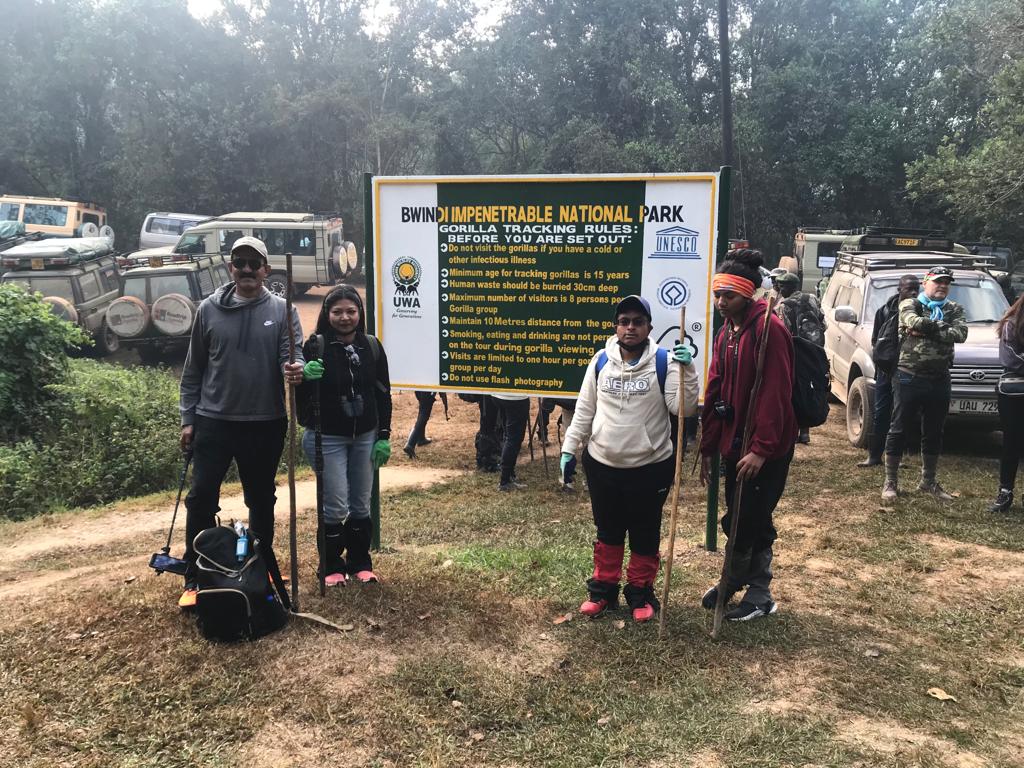
Bird Watching in Bwindi Forest
Bwindi Impenetrable Forest is one of the best birding destinations in Africa. There are 348 bird species have been recorded at Bwindi. They include 25 restricted-range species, of which 23 are confined to the Albertine Rift and four are globally threatened: African Green Broadbill -Pseudocalyptomena graueri-Vulnerable, Grauer’s Rush Warbler -Bradypterus graueri; Endangered, Chapin’s Flycatcher -Muscicapa lendu; Vulnerable and Shelley’s Crimson-wing -Cryptospiza Shelley- Vulnerable.
Tourists can not only visit Bwindi for mountain gorillas but the place is also a bird watcher’s haven. Bwindi has three bird species that are the only surviving representatives of their respective genera: African Green Broadbill, Grauer’s Warbler (Graueria vittata), and Short-tailed Warbler (Hemitesia Neumann). Indeed, both the broadbill and Short-tailed Warbler are thought to be more closely related to Asian- than to African species!
Bwindi hosts at least 220 butterfly species including 8 Albertine rift endemics. Three butterflies occur only in Bwindi including the Cream-banded swallowtail (Papilio leucotaenia), Graphium gudenusi and Charaxes fournierae. The threatened African giant swallowtail (Papilio antimachus) is also found in Bwindi.
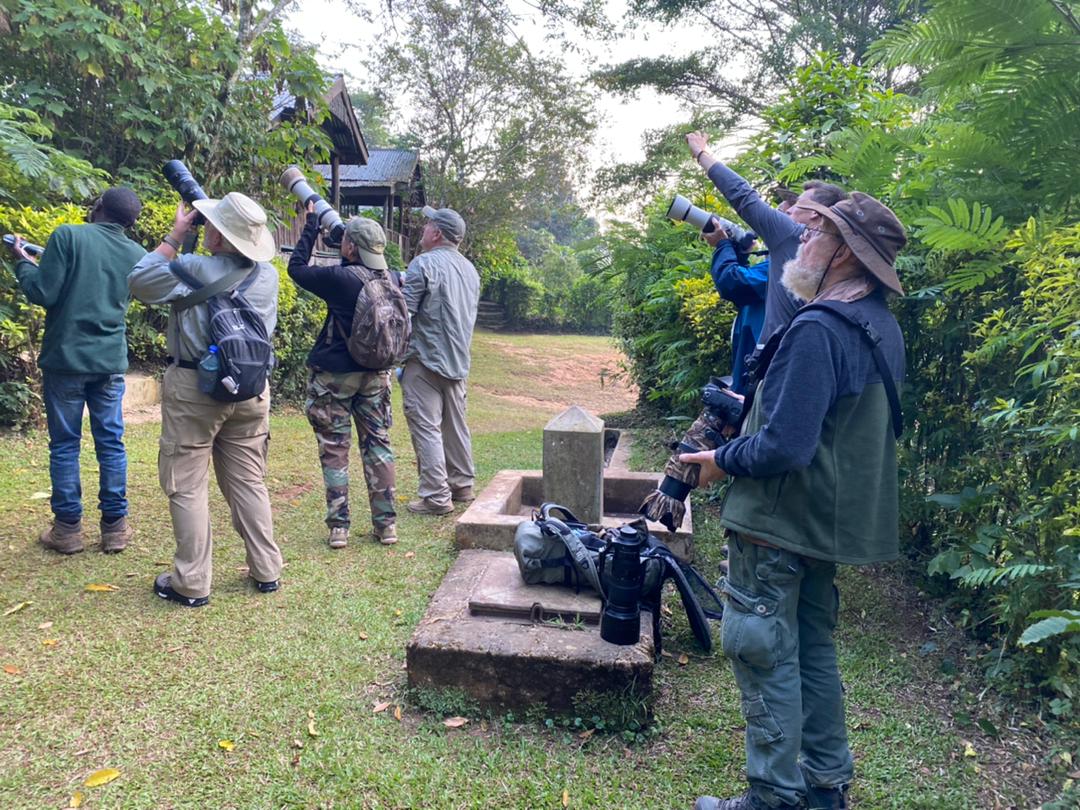
Visit Our beautiful lakes
Lake Mutanda-Kisoro
Things to do and see-Lake Mutanda-Kisoro-Uganda, Lake Mutanda is simply one of the most scenic Lakes in all of Africa – simply amazing, stunning, and yet for many visitors to Uganda it is off of the beaten path and most never venture here. Those that do find a magical, scenic paradise that is beyond any imagination.
Lake Bunyonyi
Lake Bunyonyi is believed to be more than eight thousand years old and lies in a deep valley between Kisoro and Kabale.
There are more than twenty small islands are sprinkled across the lake, and steep terraced hills rise from the shores. It is scenically a very beautiful place to spend a day or two.
Bunyonyi means ‘place of small birds’ giving tribute to the varied birdlife that lives along the shores and on the small islands of the lake itself. Visitors can enjoy canoeing, mountain-biking, hiking or kayaking in the area. It is also a good base from which to meet the local Batwa pygmy communities.
Visit Lake Mulehe
Lake Mulehe is a natural lake that covers a surface area of two square kilometers and has an average located 10kms from Kisoro Town along Kisoro-Bwindi Rushaga gorilla trekking route in western Uganda. Like Lake Mutanda, Mulehe is surrounded by spectacular terraces farmed by the local community in the neighboring hills. The lake is located on the road that links Bwindi Gorilla Park to the nearby Kisoro town. Lake Mulehe it has turned green, leaving hundreds of residents who depend on the water source, scared. Some of the tourism attractions on Lake Mulehe include fishing, canoeing, birding, speed boats and the rich welcoming culture of the Bakimbiri, the residents.

